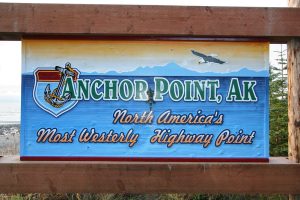Boondocking Beachfront Map
Top 20 Beach Boondocking Spots in the United States
The appeal of beach boondocking
Beach boondocking has become increasingly popular among RV enthusiasts looking for an affordable and unique way to experience the beauty of the United States’ vast and diverse coastline. With the opportunity to park your RV just steps away from the shore, beach boondocking offers an unparalleled sense of freedom and connection to nature.
The diverse coastline of the United States
From the rugged cliffs of the Pacific Northwest to the warm, sandy beaches of the Gulf Coast, the United States boasts an impressive variety of coastal landscapes. This article will guide you through 20 of the best beach boondocking spots across the country, so you can embark on your own unforgettable seaside RV adventure.
Eastern Seaboard Beach Boondocking Spots
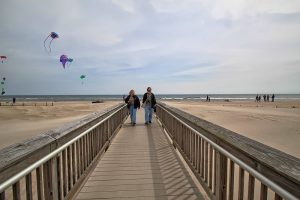
Assateague Island National Seashore, Maryland, and Virginia
Located off the coast of Maryland and Virginia, Assateague Island National Seashore offers picturesque beaches and the unique opportunity to spot wild horses roaming the island. There are a few boondocking locations on the island, with the most popular being the Oceanside Campground in Maryland, which provides basic amenities such as restrooms, picnic tables, and fire rings. Be prepared for a more primitive experience, as there are no hookups or dump stations available.
Wild horse sightings and other wildlife
While visiting Assateague Island, keep an eye out for the famous wild horses, as well as other wildlife such as deer, foxes, and various bird species. Remember to respect the wildlife and maintain a safe distance to ensure the wellbeing of both you and the animals.
Image by Bill Smith via flickr
Cape Hatteras National Seashore, North Carolina
Cape Hatteras National Seashore is a popular destination for beach boondocking, with several campgrounds offering a mix of reservation and first-come, first-serve sites. The Cape Point Campground is particularly well-regarded, with amenities such as restrooms, showers, and grills. Keep in mind that there are no hookups available, so come prepared with ample water and power supplies.
Surfing opportunities and lighthouse tours
Cape Hatteras is a haven for surfers, boasting some of the best waves on the East Coast. If you’re not into surfing, there are plenty of other activities to enjoy, such as visiting the iconic Cape Hatteras Lighthouse or exploring the area’s rich maritime history.
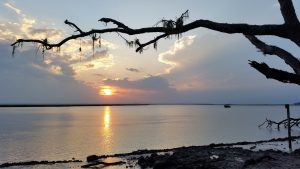
Cumberland Island National Seashore, Georgia
Cumberland Island National Seashore offers a remote and tranquil boondocking experience. The island is only accessible by ferry, and the Sea Camp Campground is the primary boondocking location. The campground offers restrooms, cold showers, and potable water, but no hookups. Be sure to make reservations well in advance, as spots fill up quickly.
Pristine beaches and historic ruins
Cumberland Island is known for its pristine beaches, maritime forests, and historic ruins such as the Dungeness Mansion. Enjoy the island’s unspoiled beauty by hiking its many trails or simply relaxing on the beach. Keep an eye out for wildlife, including wild horses, deer, and various bird species.
Image bt Reinhard Link via flickr
Fort De Soto Park, Florida
Fort De Soto Park, located near St. Petersburg, Florida, offers a fantastic beach boondocking experience. The park’s campground provides 238 sites, complete with water and electric hookups, restrooms, showers, and laundry facilities. While not entirely free, the reasonable rates make it an appealing option for RVers seeking a beachfront experience with modern amenities.
Fishing opportunities and birdwatching
Fort De Soto Park is a prime spot for fishing, with two fishing piers and abundant fish populations. Additionally, the park is home to a wide variety of bird species, making it a popular destination for birdwatching enthusiasts.
Gulf Coast Beach Boondocking Spots
Image by G. Lamar Yancy via flickr
Padre Island National Seashore, Texas
Padre Island National Seashore in Texas is the world’s longest undeveloped barrier island, offering miles of pristine beaches perfect for boondocking. The Malaquite Campground provides 48 semi-primitive sites with restrooms, cold showers, and picnic tables but no hookups. For a more secluded experience, consider boondocking along the beach, but be aware of the requirements for a beach parking permit.
Fishing and water sports
Padre Island is an ideal location for fishing, with numerous opportunities for surf fishing and wade fishing. Additionally, the calm waters of the Laguna Madre provide the perfect setting for water sports such as kayaking and windsurfing.
Image by NPCA Photos via flickr
Gulf Islands National Seashore, Florida and Mississippi
Gulf Islands National Seashore stretches along the coastlines of Florida and Mississippi, offering several beach boondocking spots. Fort Pickens Campground in Florida and Davis Bayou Campground in Mississippi are popular options, providing basic amenities such as restrooms, showers, and picnic tables, but no hookups.
Exploring Fort Pickens and Fort Massachusetts
While boondocking at Gulf Islands National Seashore, take the time to explore historic forts such as Fort Pickens and Fort Massachusetts. These sites offer a glimpse into the area’s rich military history and provide stunning coastal views.
West Coast Beach Boondocking Spots
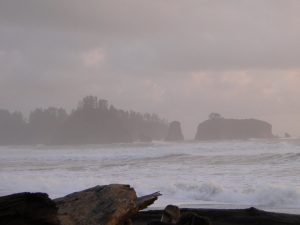
Olympic National Park, Washington
Olympic National Park in Washington State offers a unique beach boondocking experience, with rugged coastlines and lush rainforests. South Beach Campground and Kalaloch Campground are popular options, providing primitive sites with restrooms and picnic tables but no hookups. Be prepared for cooler temperatures and potentially wet conditions.
Wildlife viewing and scenic drives
Olympic National Park is home to diverse wildlife, including elk, bears, and whales. Enjoy scenic drives along Highway 101, which loops around the park and offers breathtaking views of the Pacific coastline.
Oregon Coast Boondocking Sites
Harris Beach State Park, Oregon
Harris Beach State Park, located near Brookings, Oregon, offers beautiful coastal views and a variety of boondocking options. The campground provides sites with water and electric hookups, as well as restrooms and showers. For a more primitive experience, there are several first-come, first-serve sites without hookups. Reservations are recommended during peak season.
Cape Blanco State Park, Oregon
Cape Blanco State Park is another fantastic boondocking location on the Oregon coast. The park’s campground offers a mix of reservation and first-come, first-serve sites, with water and electric hookups, restrooms, and showers. Be sure to visit the Cape Blanco Lighthouse and hike the trails for stunning coastal views.
California Coast Boondocking Sites
Kirk Creek Campground, Big Sur, California
Kirk Creek Campground in Big Sur is a sought-after beach boondocking location, offering dramatic coastal views and a peaceful atmosphere. The campground provides primitive sites with no hookups, but it does have restrooms and picnic tables. Reservations are highly recommended, as this popular spot fills up quickly.
Glass Beach, Fort Bragg, California
Glass Beach in Fort Bragg is a unique boondocking destination, known for its colorful sea glass-covered shore. While there isn’t a designated campground, boondocking is allowed at nearby Pomo Bluffs Park, which has restrooms but no hookups. Be sure to follow local regulations and pack out what you pack in.
Rincon Parkway, Ventura, California
Rincon Parkway, located along Highway 1 in Ventura, California, offers beachfront boondocking with incredible ocean views. While there are no designated campsites, RVers can park along the parkway for a nominal fee. There are no hookups or restrooms, so come prepared for a more primitive experience.
Leo Carrillo State Park, Malibu, California
Leo Carrillo State Park in Malibu provides a picturesque beach boondocking experience. The park’s campground offers sites with water and electric hookups, restrooms, and showers. While not free, the park’s location and amenities make it a popular choice for RVers seeking a coastal getaway.
Hawaii and Alaska Beach Boondocking Spots
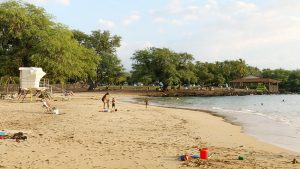
Spencer Beach Park, Big Island, Hawaii
Spencer Beach Park, located on the Big Island of Hawaii, offers a unique beach boondocking experience in a tropical paradise. The park’s campground provides basic amenities such as restrooms, showers, and picnic tables but no hookups. Be prepared for a more primitive experience and pack out what you pack in.
Snorkeling and swimming with manta rays
While visiting Spencer Beach Park, take advantage of the crystal-clear waters and abundant marine life. Snorkeling is a popular activity, and nighttime snorkeling with manta rays is a once-in-a-lifetime experience not to be missed.
Image by puuikibeach via flickr
Anchor Point, Alaska
Anchor Point, located on Alaska’s Kenai Peninsula, offers a unique beach boondocking experience in the Last Frontier. The Anchor River Campground provides basic amenities, including restrooms and picnic tables, but no hookups. Be prepared for cooler temperatures and potentially wet conditions.
Fishing opportunities and wildlife viewing
Anchor Point is an angler’s paradise, with world-class salmon and halibut fishing opportunities in the nearby Anchor River. Wildlife viewing is also a popular activity, with chances to spot moose, bears, and a variety of bird species.
Choosing the Right Beach Boondocking Spot
Assessing your boondocking needs and preferences
When selecting the perfect beach boondocking spot, consider your personal preferences and the amenities you require. Determine whether you prefer a more secluded location or a campground with hookups and facilities. Additionally, consider the activities you enjoy, such as fishing, surfing, or wildlife viewing, and choose a location that caters to your interests.
Considering local regulations and permits
Before embarking on your beach boondocking adventure, research local regulations and obtain any necessary permits. Some locations may have restrictions on overnight parking, fires, or pets. Always respect local rules and regulations to ensure a safe and enjoyable experience.
Tips for Successful Beach Boondocking
Preparing your RV for beach conditions
Before hitting the beach, ensure your RV is prepared for the unique challenges of beach boondocking. Check your tires, secure loose items, and consider investing in equipment such as sand tracks or traction mats. Be aware of the risks of saltwater corrosion and rinse your RV with fresh water after your trip.
Respecting the environment and practicing Leave No Trace principles
When beach boondocking, it’s crucial to respect the environment and leave your campsite as you found it. Practice Leave No Trace principles by disposing of waste properly, minimizing your impact on wildlife, and respecting other campers. Remember, responsible boondocking helps protect these beautiful locations for future generations to enjoy.
Resources
- National Park Service – https://www.nps.gov/index.htm (General information about National Parks, National Seashores, and other protected areas)
- Assateague Island National Seashore – https://www.nps.gov/asis/index.htm (Official information about Assateague Island National Seashore)
- Cape Hatteras National Seashore – https://www.nps.gov/caha/index.htm (Official information about Cape Hatteras National Seashore)
- Cumberland Island National Seashore – https://www.nps.gov/cuis/index.htm (Official information about Cumberland Island National Seashore)
- Padre Island National Seashore – https://www.nps.gov/pais/index.htm (Official information about Padre Island National Seashore)
Frequently Asked Questions
A. What is boondocking and why is it popular?
Boondocking, also known as dry camping or wild camping, is the practice of camping without hookups or amenities, often in remote or undeveloped locations. It is popular among RVers for its cost savings, seclusion, and the opportunity to connect with nature.
B. Are there any safety concerns with beach boondocking?
Beach boondocking can pose unique safety concerns, such as changing tides, weather conditions, and wildlife encounters. Always research local conditions and follow safety guidelines to minimize risks.
C. How do I find beach boondocking spots?
Beach boondocking spots can be found through online resources, such as blogs, forums, and apps, as well as by word of mouth from fellow RVers. Always confirm that boondocking is permitted before setting up camp.
D. What are some essential items to pack for beach boondocking?
Essential items for beach boondocking include fresh water, extra food, a first aid kit, and tools for RV maintenance. Additionally, consider packing items specific to beach conditions, such as sunscreen, insect repellent, and beach chairs. Remember to pack out what you pack in and leave no trace.
By following these tips and considering your unique preferences, you can embark on the ultimate RV beach boondocking adventure across the United States. Explore the diverse coastlines, from the Eastern Seaboard to the Gulf Coast, and from the West Coast to Hawaii and Alaska, and experience unforgettable memories in the great outdoors.
Conclusion
Beach boondocking offers a unique and unforgettable experience for RV adventurers, with diverse and beautiful coastlines to explore across the United States. By considering your preferences, researching local regulations, and preparing your RV, you can find the perfect beach boondocking spot for your next adventure.

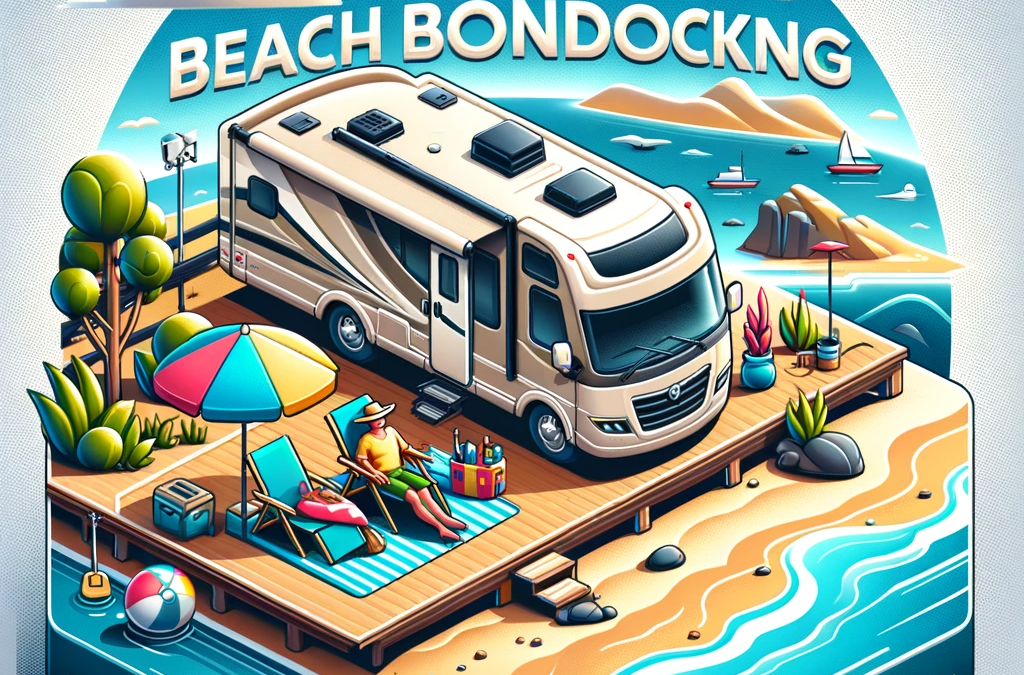
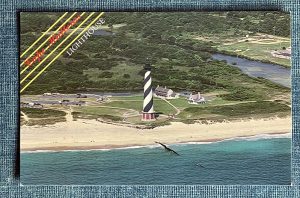
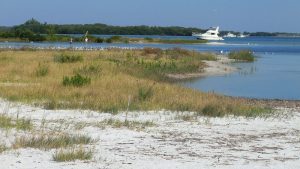
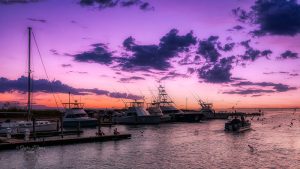
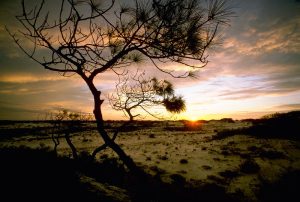
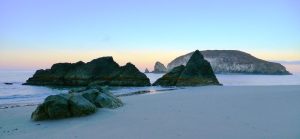 Image by
Image by  Image by
Image by 